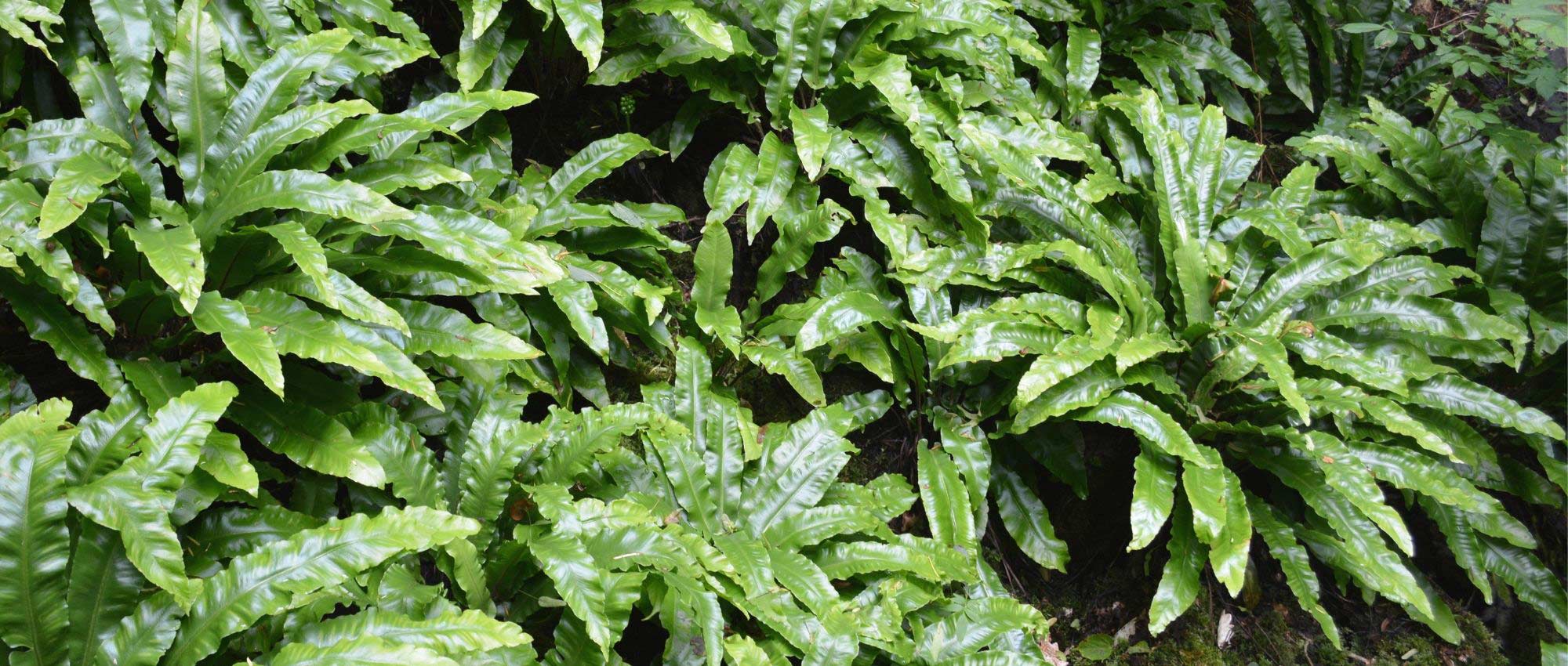
Asplenium: planting, growing, and care
Contents
Asplenium in a nutshell
- Asplenium are lovely ferns, perfect for a naturalistic garden or woodland setting.
- Asplenium scolopendrium has beautiful elongated and evergreen fronds.
- Asplenium trichomanes, on the other hand, is ideal for enhancing a wall or rockery.
- These are small ferns with delicate fronds.
- They are very hardy and easy to grow!
A word from our Expert
We appreciate Asplenium for their beautiful evergreen fronds, which bring a natural and lush look to the garden. The most well-known is Asplenium nidus, or Bird’s Nest Fern, but that is not our focus here, as it is an indoor plant! We will mainly discuss hardy Asplenium, which find their place outdoors in the garden. Among them, Scolopendre is very distinctive: it is easily recognised by its entire, slender, elongated fronds in a beautiful glossy green hue. It integrates perfectly into a woodland garden! Although belonging to the same group, Asplenium trichomanes is very different: it is a small fern with linear fronds divided into ovate segments. It primarily grows on walls or in rockeries.
Whether you are a beginner or not in gardening, Asplenium are plants that will charm you with their ease of cultivation and the natural feel they bring. Once planted, they take care of themselves and require no special attention. Simply place them in shade or partial shade, in open ground for Scolopendre and in a rockery or on a wall for Asplenium trichomanes. And enjoy!
Description and botany
Botanical data
- Latin name Asplenium sp.
- Family Aspleniaceae
- Common name Asplenium, Scolopendre, hart's tongue
- Flowering none
- Height between 15 and 60 cm
- Exposure shade or partial shade
- Soil type cool, draining, humus-bearing
- Hardiness -30 °C (Asplenium scolopendrium and trichomanes)
Asplenium comprises nearly 460 species of evergreen ferns, native to temperate or tropical regions. Asplenium has a wide global distribution: they can be found on nearly every continent! They form a large, highly diverse group. Many Asplenium are epiphytic, growing naturally on trees. They can also grow on rocks, walls… Finally, a large number of Asplenium are terrestrial, growing on the ground in woodlands.
The most well-known species is Asplenium nidus, the Bird’s Nest fern, but it is not hardy; it is an indoor plant! However, Asplenium scolopendrium, often cultivated in gardens, has a similar shape, with long, entire green fronds. In France, it can be found in woodlands, rocky environments, on old walls, or by watercourses. It is protected in the Limousin and Provence-Alpes-Côte d’Azur regions.
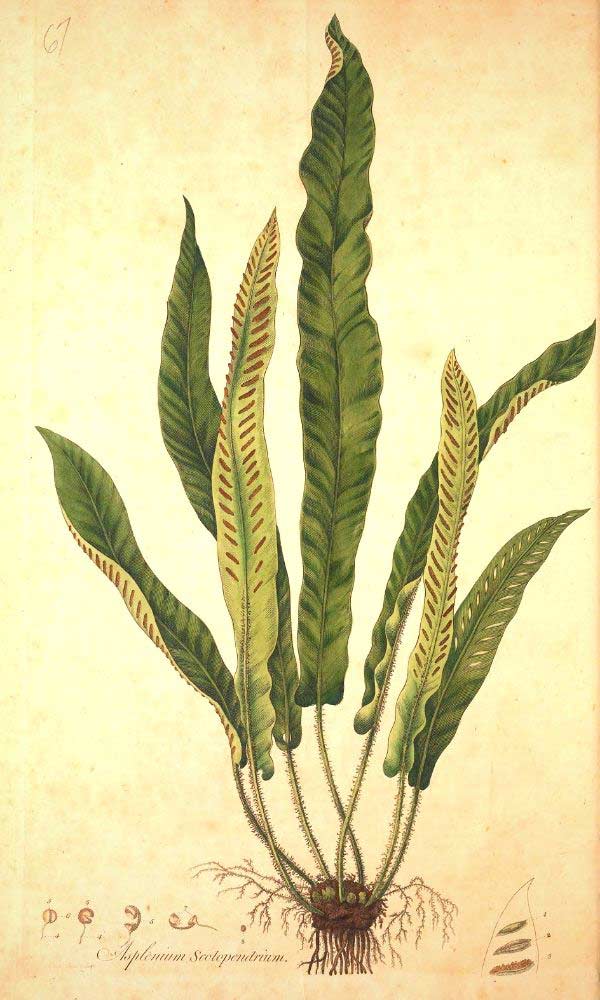
Asplenium scolopendrium: Botanical illustration
Very different, Asplenium trichomanes is a wall or rock garden fern, appreciated for its fine fronds, divided into small segments. It is quite common throughout France. We can also mention the Wall Rue, Asplenium ruta-muraria, and the Common Ceterach (Asplenium ceterach). These are small ferns that, like Asplenium trichomanes, grow on old walls. All these ferns are small and delicate! They require very little substrate and are quite drought-resistant.
The name Asplenium comes from the Greek a: without, and splên, which refers to the spleen, alluding to the medicinal properties of these ferns, reputed to be effective against spleen diseases.
Asplenium trichomanes is also called “Wall Capillary,” which obviously refers to its ecology, as it is often found on old stone walls, wells, rocks, or scree areas. The name “capillary” refers to the fineness of its fronds! In fact, its species name, trichomanes, comes from the Greek thrix, meaning “hair.”
Both Asplenium scolopendrium and trichomanes have excellent hardiness: they can withstand temperatures as low as -30 °C! Even if you live in a cold region, such as in the mountains, these Asplenium will adapt without any problem.
Asplenium belongs to a vast group, that of ferns or Pteridophyta. These are very ancient plants that reached their peak during the Carboniferous period, long before the appearance of dinosaurs! They retain primitive characteristics, such as reproduction by spores, and the absence of flowers or fruits. They require the presence of water to multiply, which explains why they are mainly found in humid environments. Among ferns, Asplenium are classified in the family Aspleniaceae, which they have given their name.
Ferns do not produce flowers or fruits and have the particularity of reproducing through their spores. By observing the underside of the fronds, one can see brown clusters that contain tiny spores, resembling dust. They will be carried away by the wind and germinate on the ground in the presence of water. This will give rise to prothalli: tiny organisms resembling moss, which bear the reproductive organs. Prothalli will allow fertilization, followed by the emergence of new ferns. Obviously, this life cycle takes time and requires specific conditions. In Asplenium, spores appear in summer, between June and September. It is possible to collect and sow them.

Asplenium scolopendrium ‘Undulatum Angustatum’ (photo Guido), Asplenium scolopendrium ‘Undulatum’ (photo Ashley Basil), and Asplenium trichomanes
The Asplenium scolopendrium forms a spreading tuft that can reach up to 45 cm in height. Unlike most ferns, it has entire, undivided leaves. They are long, upright, and have a beautiful glossy green hue. They are cordate at the base, forming two auricles around the petiole. These fronds have a lovely light green colour when young, becoming darker over time. The base of the petioles bears dark brown scales.
Although somewhat hidden, as they are located on the underside of the fronds, the sori of Asplenium scolopendrium are quite decorative due to their arrangement in regular lines. They are arranged obliquely to the midrib, forming chevron-like patterns or fishbone shapes. Their shape also resembles that of a millipede, which has earned this fern its nickname of scolopendre.
If you tire of the classic, rather simple shape, the different varieties add a touch of whimsy. Thus, as its name suggests, Asplenium scolopendrium ‘Undulatum’ is distinguished by a wavy, frilled lamina edge. In the variety ‘Cristatum’, in addition to this waviness, the tips of the fronds are notched, divided into several segments, adding a lot of originality!
The Asplenium trichomanes is very different from the scolopendre: it is a charming, discreet fern that does not exceed 20 cm in any direction. Its linear fronds are composed of 20 to 40 pairs of small oval segments. The leaves are initially light green when they appear, then darken over time. They are beautifully highlighted by the central axis (rachis) which is black!
There is also a surprising Asplenium bulbiferum, which has the unique feature of bearing bulbils on its fronds! They can easily be harvested to propagate the plant; they will root upon contact with the soil.
Tropical species of Asplenium, on the other hand, grow much larger than those cultivated in gardens: some reach heights of 1.5 m or even 2 m! This includes Asplenium australasicum or Asplenium nidus. These impressive ferns resemble giant scolopendres!

The spores on the underside of the fronds of Asplenium scolopendrium (photo Salicyna), and Asplenium trichomanes (photo Luis Fernández García)
The main varieties of Asplenium
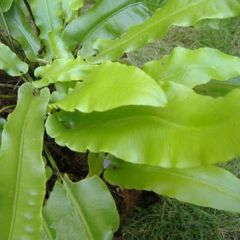
Phyllitis scolopendrium
- Height at maturity 45 cm
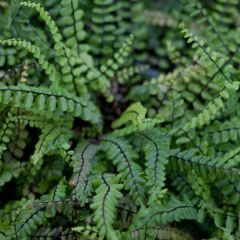
Asplenium trichomanes
- Height at maturity 15 cm
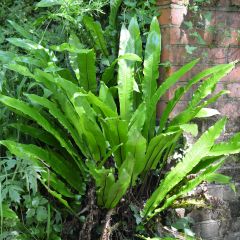
Asplenium scolopendrium Undulatum Group - Hart's Tongue Fern
- Height at maturity 30 cm
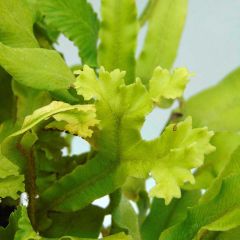
Asplenium scolopendrium Cristatum Group - Hart's Tongue Fern
- Height at maturity 40 cm
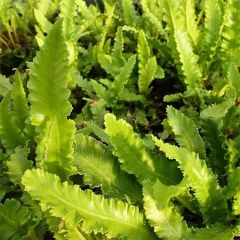
Asplenium scolopendrium Undulatum Angustatum - Hart's Tongue Fern
- Height at maturity 30 cm
Discover other Asplenium
View all →Available in 2 sizes
Available in 1 sizes
Available in 1 sizes
Available in 2 sizes
Available in 2 sizes
Available in 2 sizes
Available in 1 sizes
Available in 2 sizes
Available in 1 sizes
Planting
Where to plant?
The Asplenium scolopendrium is a plant primarily found in forests. Thus, like most ferns, it mainly requires shade and moisture. It will naturally fit in undergrowth but can also be placed in a shaded border, in a cool rockery, or even by the edge of a pond. It appreciates good woodland soil that is cool, rich, and fertile. Regarding pH, the scolopendrium prefers calcareous soils.
The growing conditions are different for Asplenium trichomanes, which is more of a wall and rockery plant! It requires very little substrate, thriving in a small space or a crack between stones. However, if you wish to cultivate it in a more traditional manner, this low-maintenance fern will also accept growing in open ground! The pH is not a concern for it either: it tolerates both acidic and calcareous soils.
When to plant?
You can plant Asplenium in spring, around April, or in autumn, in September-October.
How to plant?
For planting in open ground:
- Start by placing the root ball in a basin filled with water to rehydrate it.
- While it is soaking, dig a planting hole about twice the size of the root ball.
- Mix some compost or leaf mould into the planting soil.
- Plant your fern, replace the soil around it, and gently firm it down with the palm of your hand to ensure good contact between the roots and the substrate.
- Water generously.
- Feel free to apply a mulch, made from dead leaves, RCW, or flax shives, for example.
To install a fern on a stone wall:
This type of planting is especially suitable for Asplenium trichomanes, A. ruta-muraria, and A. ceterach.
- Choose a spot between the stones.
- Place a mixture of garden soil and well-decomposed compost there.
- Firm it down to ensure the substrate settles well between the stones.
- Remove the fern from its pot and plant it.
- If there is a little space left, fill it with substrate.
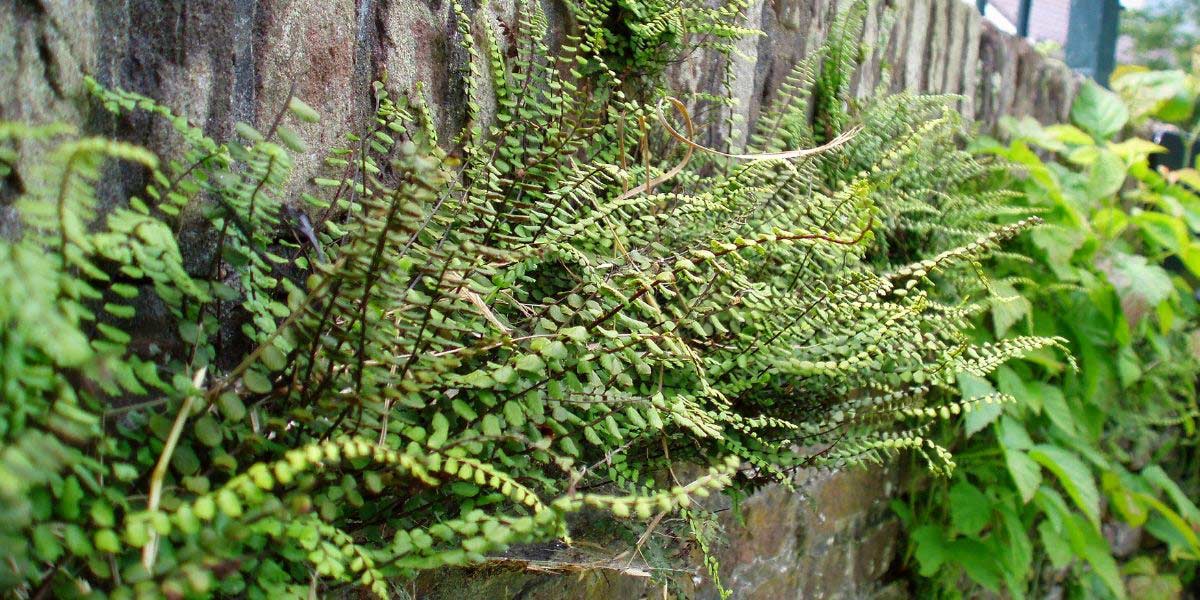 Asplenium trichomanes easily finds its place on a stone wall
Asplenium trichomanes easily finds its place on a stone wall
Read also
How to sow fern spores?Care
Asplenium are low-maintenance plants. They require virtually no care! They are rarely affected by diseases or pests: only rust, in the case of a wet winter, can damage the fronds of the Hart’s-tongue fern.
You can mulch the Asplenium scolopendrium to keep the soil cool and prevent the growth of weeds. It can also be beneficial to add a little well-rotted compost each year to enrich the soil.
The Asplenium trichomanes is also a very hardy fern: it is quite hardy, tolerates sun and drought… It does not require fertiliser and grows very well in poor soil.
Multiplication
If your Asplenium are young and not yet very spreading, sowing spores can be a good solution. Otherwise, prefer division: it’s a simpler and quicker technique! The Asplenium bulbiferum has the particularity of bearing small bulblets on its fronds, which root upon contact with the soil. As soon as they form at least three fronds, you can take them and pot them up.
Sowing
You can collect and sow Asplenium spores. This is a time-consuming technique but allows you to obtain a large number of young ferns, with no impact on the existing plants.
The idea is to create a humid medium, as ferns need water to reproduce. However, humidity creates a favourable environment for fungi and mosses, which is why the substrate must be sterilised.
- Start by collecting the spores from the underside of the fronds. To do this, cut a frond and place it in a paper envelope. The spores will detach on their own! Sow them without too much delay: they lose some of their seed viability over time.
- Mix potting soil with a bit of sand, and sieve it to obtain a fine substrate.
- Take a glass or transparent plastic container (for example, a Tupperware with a lid).
- Place the substrate in the container and moisten it. The surface should be irregular and airy; avoid compacting or levelling the substrate too much.
- Place the container in the microwave for 10 minutes to sterilise it.
- Disperse the spores evenly over the surface of the substrate.
- Place a transparent lid on top to maintain a sterile and humid atmosphere.
- Position the pot in a bright location, out of direct sunlight, at a temperature of around 15 °C.
All you have to do now is wait. After one or two months, you should see a fine green film on the surface of the potting soil: these are the prothalli, tiny organisms that bear the reproductive organs. The presence of water will allow fertilisation, followed by the emergence of new small ferns!
If the substrate dries out during cultivation, do not hesitate to moisten it again, preferably with sterilised water (boil it and wait for it to cool before watering).
For more information, check out our dedicated advice sheet: “How to sow fern spores?”
Tuft division
If you have large tufts of Asplenium scolopendrium, you can divide them in early spring, around March-April.
- Identify a well-developed tuft that has been in place for several years.
- Dig wide enough to unearth it without damaging the rootstock and roots.
- Gently divide the tuft into several segments. Each segment should have at least a few roots.
- Prepare the soil at another location by adding compost, and replant.
- Water generously.
Associating
Asplenium scolopendrium is ideal for a natural woodland garden. You can pair it with other shade plants: periwinkle, Lamium, Hostas… Also enjoy the stunning flowering of the Solomon’s Seal, and the Sweet Woodruff, a small spreading perennial that bears delicate, very light white flowers. Don’t hesitate to plant it alongside other ferns: Athyrium niponicum, Dryopteris erythrosora, Matteuccia struthiopteris…
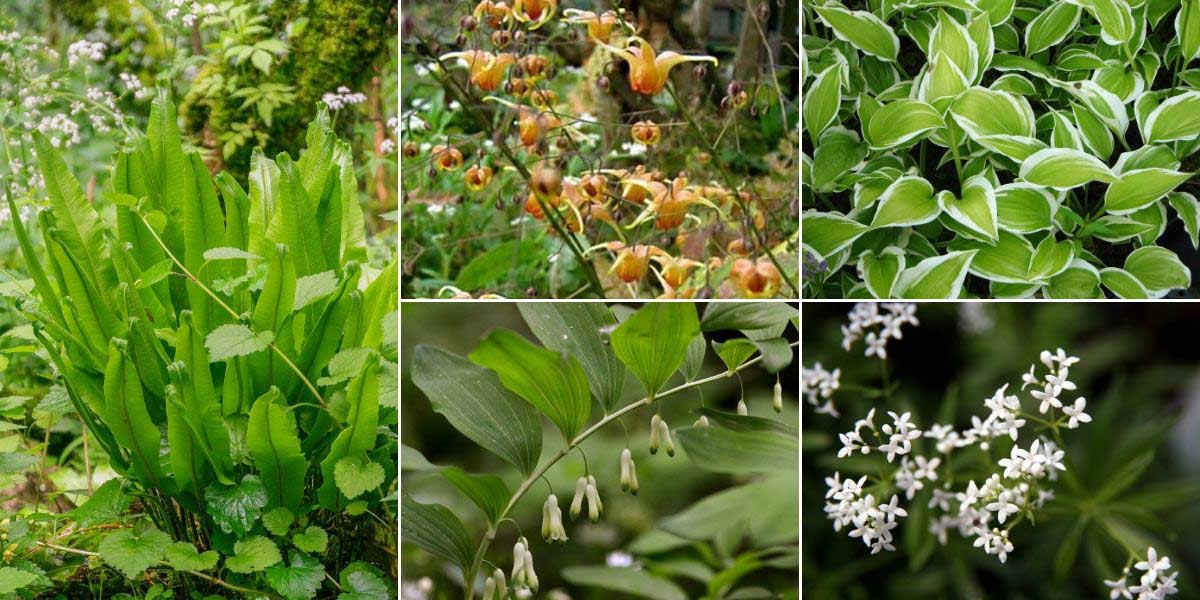
An example of pairing for a beautiful, very natural woodland scene: Asplenium scolopendrium (photo Krzysztof Golik), Epimedium ‘Amber Queen’, Hosta ‘Emily Dickinson’, Polygonatum multiflorum (photo Radio Tonreg), and Galium odoratum (photo David J. Stang)
Asplenium are also perfect in a shaded, cool rockery. Here, you can accompany them with Corydalis, Ajuga reptans, Saxifrages… Also consider the fern Coniogramme emeiensis, very original with its green fronds striated with yellow. For more pairing ideas, check out our advice sheet: “10 plants to create a shady rockery”
You can also enjoy the Asplenium trichomanes to dress a stone wall in partial shade. Plant it, for example, with the delicate Cymbalaria muralis, also known as the Ruin of Rome, which bears beautiful small mauve flowers. You can integrate alongside them a variety of ivy with variegated foliage (for example ‘Goldchild’ or ‘Glacier’). Also enjoy the fern Polypodium vulgare or the periwinkle Vinca minor.
The Asplenium will be wonderful in a rockery alongside small spring bulbs, just as delicate as it is! We particularly recommend the Erythronium ‘Pagoda’, for its very bright spring flowering, as well as muscari and Bluebell.
Useful resources
- Discover our range of Asplenium
- Fernatic, the French site for fern enthusiasts
Frequently asked questions
-
Do I need to add fertiliser?
For Asplenium scolopendrium, you can simply add a bit of compost each year. If you are growing it in a pot, provide some slow-release fertiliser at the time of planting and during repotting. For Asplenium trichomanes, fertilisation is unnecessary.
-
Can I plant Asplenium scolopendrium on a wall?
If the wall is shaded, and if you can find space to slip substrate between the stones, then yes, this situation will suit it perfectly!
-
Can I plant Asplenium in the sun?
If it is Asplenium scolopendrium, avoid it. It is a woodland plant that needs to be protected from direct sunlight. However, if you are growing Asplenium trichomanes, you can easily place it in the sun. This fern is low-maintenance.
- Subscribe!
- Contents
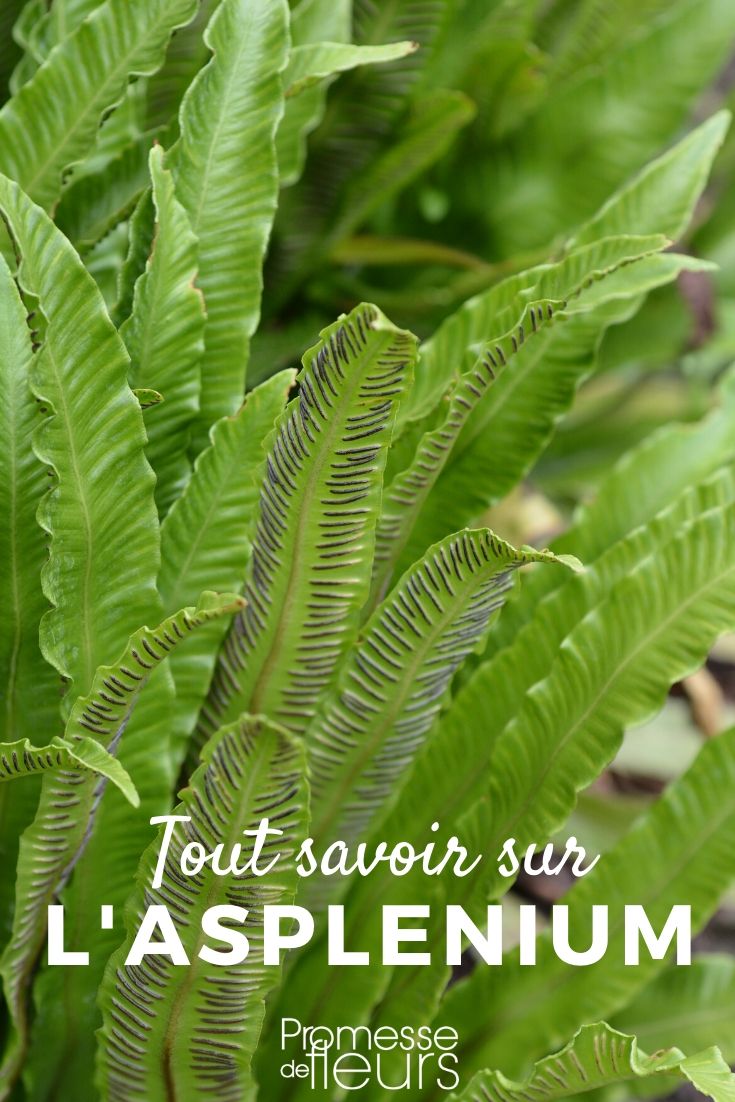



































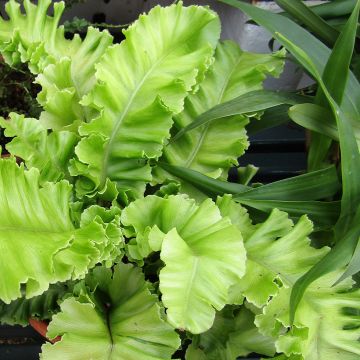
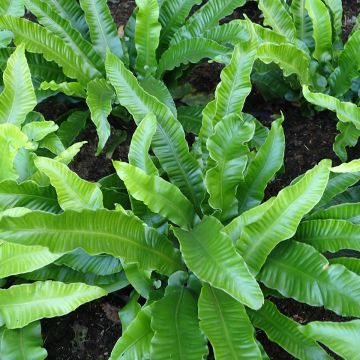
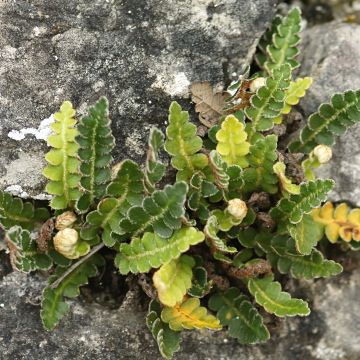

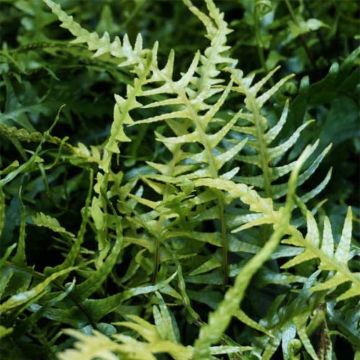
Comments